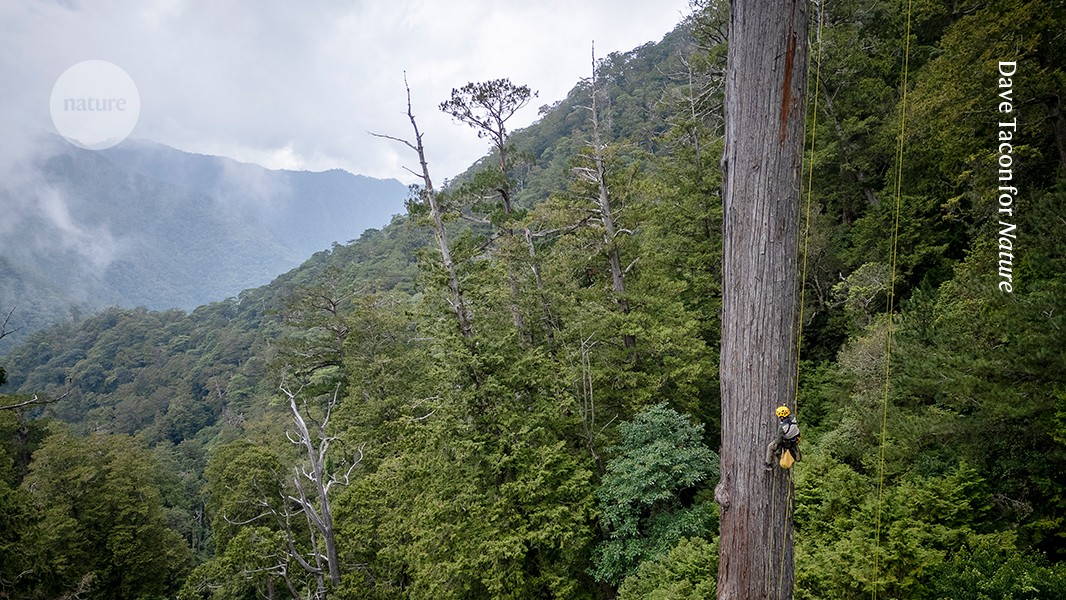“Climbing very tall trees is hard. You can really feel the stretch in the rope, especially when you’re ascending. You bounce around and expend a lot of energy reaching the top by hanging in the air and hauling yourself up. Some climbers will panic, but when I reach the high tree canopy, I feel good. The light and the wind all the way up there feels so different from on the ground.
In this photograph, I’m abseiling down from the canopy of a giant Taiwania tree — we call this specific tree Great White. I climbed it in late June in a forest at an elevation of 1,900 metres in the north of Taiwan.
There are only 941 trees taller than 65 metres in the giant tree map of Taiwan we maintain at the Taiwan Forestry Research Institute in Taipei; Great White is one of them.
It’s difficult to estimate the age of a tree of this height because they are always hollow, owing to rot caused by fungus. This forest experiences environmental disasters such as earthquakes or landslides around once every 400 years, which is what we use to age the trees instead. We can see that Great White has survived two of these, so we estimate it to be between 800 and 1,000 years old.
My research focuses on vascular epiphytes — those plants that live on other plants, but do not parasitically steal their host’s nutrients — but the forestry institute researches many different elements of plant life. For example, we just launched a four-year project on how giant trees are affected by climate change and set up weather stations in the canopy of Great White. This photo shows the first time we’ve harvested the data.
I love exploring the forest canopy. Every tree climb is an adventure. You never know what you’re going to meet in the canopy until you’re there. This is the fourth time I’ve climbed Great White, but I’m still discovering things such a rare species of lily (Heteropolygonatum altelobatum) that was flowering during this climb. It’s possibly a new variety.”
This interview has been edited for length and clarity.


